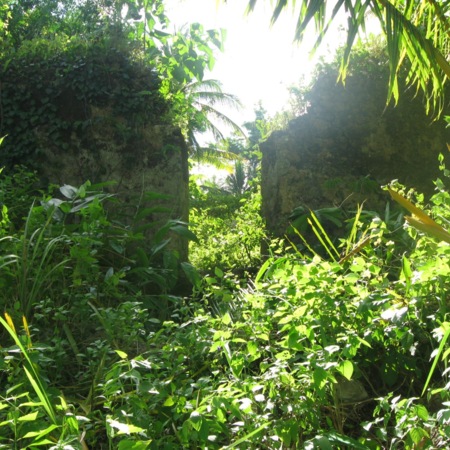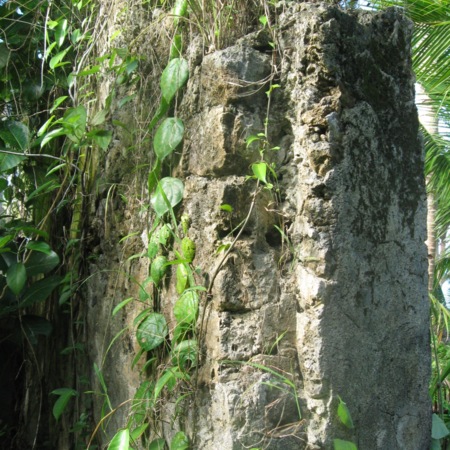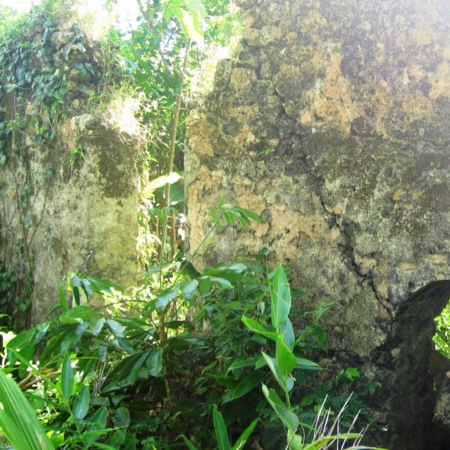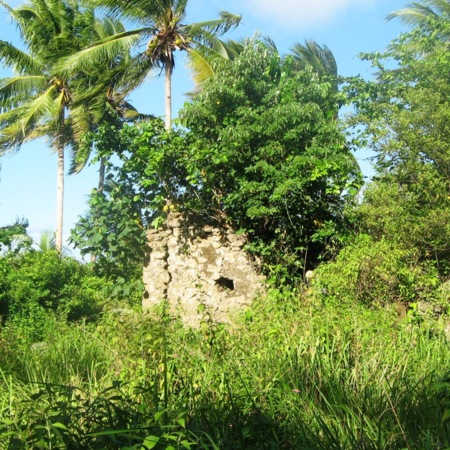Not much is known about this fort at Wokam which for a long time would have been the easternmost Dutch stronghold in the archipelago. It lies within the Aru-islands, south of New Guinea. Today the fort and the nearby village are known as Kota Lama, simply meaning old town. Wokam was the biggest settlement on the Aru-Islands. In 1659 the VOC built a fort here to control the growth and trade of nutmeg on the island. Dutch historian François Valentyn visited the post around the end of the 17th century. He noted the fort consisted of palisades and was guarded by a sergeant, a corporal and about 10 soldiers. The remote VOC post was apparently abandoned in 1792 after local uprising. In the nineteenth century several Dutch visors made note of the ruins of the fort, which apparently had been built in stone at some point, with a blockhouse defense tower. The remains of this structure, a well and the church built next to it with were still in use in 1840 and are still visible today. The ruins stand about 20 meters from the waterline in the midst of a coconut plantation. The wall segments that still stand form two rooms sized 10 x 14,5 meter each. The remnants are mostly overgrown.



